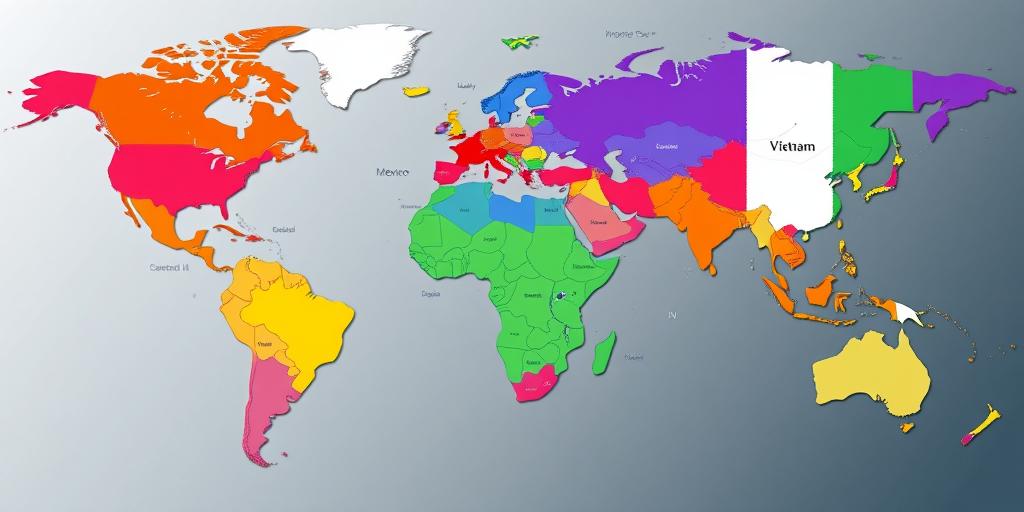Emerging Markets to Watch in 2025 (Beyond BRICS)
The term “emerging markets” often conjures images of the BRICS nations: Brazil, Russia, India, China, and South Africa. While these countries continue to hold significant economic sway, a new wave of emerging markets is poised to reshape the global landscape in 2025 and beyond. Identifying these future powerhouses requires a keen understanding of economic indicators, political stability, and technological advancements. This post will delve into several promising emerging markets that warrant close attention.
Identifying the Next Wave of Emerging Markets
Several factors contribute to a nation’s potential as an emerging market. These include:
- GDP Growth: Consistent and robust GDP growth signals economic dynamism.
- Demographics: A young, growing population often translates to a larger workforce and consumer base.
- Infrastructure Development: Investments in infrastructure, such as transportation and communication networks, are crucial for attracting foreign investment and facilitating economic activity.
- Political Stability: A stable political environment is essential for fostering investor confidence.
- Technological Adoption: Embracing new technologies can drive innovation and productivity growth.
Key Emerging Markets to Watch in 2025
Here are some of the most promising emerging markets outside of the traditional BRICS group:
- Indonesia: With a large and youthful population, Indonesia boasts a rapidly growing economy driven by manufacturing, services, and natural resources. Its strategic location in Southeast Asia also makes it a key player in regional trade.
- Vietnam: Vietnam has emerged as a manufacturing hub, attracting foreign investment due to its competitive labor costs and business-friendly policies. The country’s strong export sector and growing middle class contribute to its economic dynamism.
- Mexico: Benefiting from its proximity to the United States and its membership in the USMCA trade agreement, Mexico offers a compelling investment destination. Its diversified economy, skilled workforce, and ongoing reforms are attracting increased attention.
- Turkey: Despite recent economic challenges, Turkey remains a significant emerging market with a large and diversified economy. Its strategic location at the crossroads of Europe and Asia, coupled with its growing manufacturing sector, positions it for future growth.
- Nigeria: As Africa’s most populous country, Nigeria presents both opportunities and challenges. Its large consumer market, abundant natural resources, and growing entrepreneurial spirit make it a compelling, albeit high-risk, investment destination.
Sector-Specific Opportunities
Within these emerging markets, specific sectors offer particularly attractive investment opportunities:
- Technology: The increasing adoption of smartphones and internet access is driving growth in e-commerce, fintech, and other technology-related sectors.
- Infrastructure: Governments are investing heavily in infrastructure development to support economic growth, creating opportunities for construction, engineering, and related industries.
- Consumer Goods: The expanding middle class in these countries is driving demand for consumer goods and services, ranging from food and beverages to apparel and entertainment.
- Renewable Energy: As these nations seek to diversify their energy sources and reduce carbon emissions, renewable energy projects are gaining momentum.
Navigating the Risks
Investing in emerging markets is not without its risks. Political instability, currency fluctuations, and regulatory uncertainty can pose challenges for investors. Thorough due diligence, a long-term perspective, and a well-diversified portfolio are essential for mitigating these risks.
Conclusion
The global economic landscape is constantly evolving, and new emerging markets are poised to play an increasingly important role in the years ahead. By understanding the key drivers of growth and carefully assessing the risks, investors can identify promising opportunities in these dynamic economies. Keeping a close watch on Indonesia, Vietnam, Mexico, Turkey, and Nigeria, among others, will be crucial for navigating the emerging markets landscape in 2025 and beyond.
